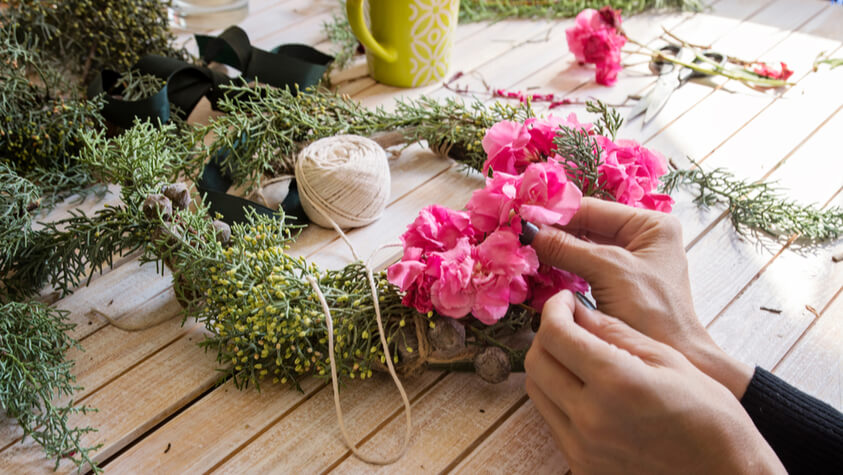By TACP Staff on July 08, 2021

Would you like a career that places you in a partnership with nature? Floral design will do just that. Using both natural materials and manmade items, floral designers create works of art for a huge array of occasions and purposes. Since spaces and objectives are multi-dimensional, the floral designer is ensured a huge spectrum of working environments from which to choose. But one thing is certain; it is a profession which puts lots of smiles on an unlimited amount of faces.
Floral design involves creating designs and arranging different pieces using flowers and other types of plant material. Live or dried flowers and plants can be used to create floral pieces. Some of the different types of floral design pieces that can be made include bouquets, corsages, wreaths, and centerpieces.
Some floral arrangements may also include non-plant materials as well, including candy and ribbons. Floral arrangements might be designed and created for several different reasons. These types of arrangements are very common at weddings and funerals, for instance. They may also be used to help celebrate different special occasions as well, such as anniversaries, holidays, and births.
A floral designer is a professional that designs and creates different types of floral arrangements. Some floral designers might grow their own flowers and plants, but many will usually purchase flowers and plants from an outside supplier. Floral designers might also hang live flowers and plants to dry, or they may use artificial flowers to create their pieces.
When creating floral arrangements with live plants, floral designers must make sure that the plants get enough water to stay alive and healthy. In order to do this, most designers choose to use a substance known as floral foam.
Working with dried flowers and plants can have its own challenges as well. For instance, dried flowers and plant stems are usually very brittle, and they must be handled with care.
Most floral designers will also usually need to interact with customers and clients as well, especially when creating custom pieces. Custom floral pieces are typically created according to a client’s specifications. Many clients will usually prefer specific types or colors of flowers, for instance, and most clients will also have a very specific budget in mind as well.
Artist Spotlight: Sophie Lau, Floral Designer
There are no strict education requirements to become a floral designer. In fact, many floral designers may start with nothing more than a hobby. As they gain more experience with arranging flowers, they will often be able to turn their hobby into a lucrative career.
Hands on training can also help a person learn the techniques necessary to become a floral. Aspiring floral designers can sometimes find employment with an experienced floral designer or florist. During this employment, they will be able to learn different floral design and arrangement techniques.
Individuals that are serious about a floral design career may also want to consider getting accredited through the American Institute of Floral Designers. To earn this accreditation, floral designers must pass a written examination, as well as successfully create several different types of floral arrangements. While becoming accredited is not necessary, it can help designers command a higher wage.
Many floral designers that are accredited choose to open their own floral shops. Small floral shops might just cater to local consumers, but very large floral shops might cater to several different cities or even an entire country.
Consider these related careers in Craft and Fine Art.

The Art Career Project is a trusted resource for emerging and professional artists.